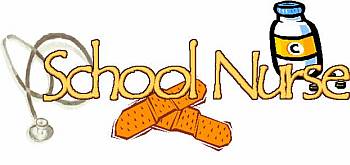 The role of school nurses has changed dramatically over the last few years. Keeping up with the medical needs of students, complex record keeping, and developing health care plans makes the job of the nurse multifaceted.
The role of school nurses has changed dramatically over the last few years. Keeping up with the medical needs of students, complex record keeping, and developing health care plans makes the job of the nurse multifaceted.
During a meeting on August 5, the Plymouth School Board voted to amend an agreement with SJRMC (Saint Joseph Regional Medical Center) that was first entered into in August, 2012. The amended agreement specifies that SJRMC will provide seven registered nurses and two health aides for the school system for the 2014-2015 school year. The school nurses are employees of SJRMC.
The total cost outlined in the agreement is for $339,312 for services provided between August 13, 2014 and June 7, 2015. The first payment to SJRMC is $169,656 to be paid on or before December 1, 2014 and the second for the same amount, is due on or before June 1, 2015.
Superintendent Daniel Tyree said, “When we hired our own nurses, we had a head nurse who had administrative and nursing duties. The head nurse was always struggling to be both a nurse and an administrator.” Tyree said with SJRMC administering the nurses, it allows those in the school buildings to just provide medical care. “Had we hired a head nurse who only had administrative duties, it would have cost a lot more than our present system where St. Joseph provides our nurses for us. St Joseph does a great job of administering our nurses.” he said. The nurses that were in place before the agreement are still with Plymouth Schools, according to Tyree. He said, “We actually picked up a nurses aide, who when one school is overloaded or one of the nurses is absent, we can use to fill-in.”
School nurses still see children with sniffles, bruises, and tummy aches, but added duties include overseeing the policies and procedures set by the School Board; monitoring required immunizations records; and assessing the school environment for safety hazards. Additionally, they must care for children with chronic conditions such as asthma, diabetes, epilepsy, allergies and those needing special treatments. It falls on the shoulders of school nurses to have emergency procedures for communicable diseases, make referrals to private medical providers, and adhere to procedures to comply with OSHA (Occupational Safety and Health Administration) standards concerning contact and possible exposure to blood borne pathogens and other infectious materials.
Nurses must also perform or coordinate health screenings for vision, hearing, body mass indexes, and mental health indexes and, often, provide generalized health education to students and staff.
The school nurse may also be involved in the first steps of identifying children who are victims of child abuse and neglect.
Tyree said, “Our nurses are great. They all care a lot for our children and are dedicated to the medical care of the students.”
Carol Anders














